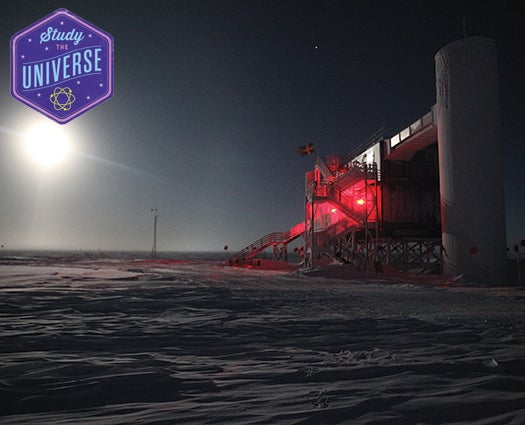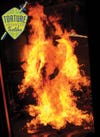The 10 Most Awesome College Labs Of 2013
Thinking about a science degree? Consider a lab where research meets white-knuckled adventure


Forensics Anthropology Center
Every semester, on a three-acre wooded bluff overlooking the Tennessee River in Knoxville, about 75 undergraduates help Dawnie Wolfe Steadman deposit dead bodies. Steadman, a forensics professor at the University of Tennessee, studies the many ways in which a body decays. Students assist her by monitoring the 100 or so donated cadavers during various stages of decomposition. They might study the life cycles of flesh-eating fauna, such as blowflies and dermestid beetles, to pinpoint time of death. Or they might retrieve DNA from the bodies and test for the presence of microbes or drugs, which authorities could use to determine identity and toxicology in murder cases. Sometimes they even help Steadman re-create, at the request of law enforcement, a crime scene—say, by stuffing dead bodies in car trunks—to test out hypotheses.
Once the insects have cleaned most of the flesh from the bone, the students take the remains back to the lab. They don scrubs, aprons, and gloves and learn to identify bones, skeletal pathologies, and different types of trauma. Then they add the skeleton to the university’s growing collection: more than 1,100, at last count.
Careers: Forensic Pathologist, Forensic Scientist, Forensic Anthropologist

Textile Protection and Comfort Center
The most important teachers in Roger Barker’s textile lab are mannequins. Barker studies how textiles respond to extreme conditions by re-creating real-world environments with three types of models: PyroMan endures conditions that mimic a burning building; it has 122 thermal heat sensors that record heat flux while Barker blasts it with eight propane-gas burners. RadMan, currently under development, has sensors that record the radiant heat of simulated forest fires. An unnamed third kind of mannequin has thermal sensors, articulated joints, and more than 100 sweating pores, so Barker can test the performance of uniforms and outdoor clothing.
Every year, about 10 North Carolina State University undergraduates help Barker on various projects. In 2012, for example, a group tested military garments that had been impregnated with insecticides (to discourage biting pests) to ensure the chemicals were within Environmental Protection Agency limits. Students may even stand in for the dummies: One group volunteered to get misted with wintergreen oil, an ersatz mustard gas, to make sure safety suits wouldn’t leak in a chemical-weapons attack. According to research assistant professor Bryan Ormond, the only job students can’t do is replace PyroMan in the burn chamber.
Careers: Materials Engineer, Sports-Clothing Developer

National Wind Institute
Students at Texas Tech University are trying to protect against the ravages of hurricanes, tornadoes, and other dangerous storms. By studying how extreme storms form and evolve, along with the damage they cause, engineers can design structures to withstand them. At the center’s Debris Impact Facility, teams use a custom high-impact gun to fire two-by-fours—the most common storm projectile—at brick walls, shelters, and safes to prove the strength of the targets’ materials and design. Other teams race to deploy sensors at sites where hurricanes are predicted to land, to collect data on wind speed, humidity, and more. This year, two graduate students even got to work on a Federal Emergency Management Agency–funded project to assess how well storm shelters held up in the wake of the tornado that hit Moore, Oklahoma, in May.
Careers: Structural Engineer, Atmospheric Scientist

Energetic Materials Research and Testing Center
Van Romero’s students don’t want to be doctors or lawyers. They want to blow things up for a living. Romero, New Mexico Tech’s vice president of research and economic development, and his staff oversee students as they detonate any number of explosives, whether C4 or TNT, across the school’s 26,000-acre mountaintop blasting range (which includes a quarter-scale urban canyon for modeling an explosion’s shock waves). Last spring, the freshman class was the first to play around in the school’s new interactive lab. The 1,220-square-foot space includes Samsung tabletop computers for sharing project designs, and a 3-D printer for building the trigger mechanisms and launching arms for a small working trebuchet.
Careers: Nuclear-Weapons Developer, Construction Blaster, Homeland Security Contractor

Wildlife Ecology and Conservation
Before his students leave for Swaziland every summer, Robert McCleery, a professor of wildlife ecology, imparts a long list of survival tips, which include: Always baboon-proof the campsite; don’t get malaria; don’t float around in the rivers, which teem with hippos, crocs, and the parasite bilharzia. Armed with that knowledge, 15 students from the University of Florida set out for one month of ecology and conservation studies. During their time in the field, students could radio-collar Egyptian slit-faced bats or collect giraffe scat for genetic analysis. They might spot black wildebeest through the mist-covered mountains of the Malolotja Nature Reserve or study impalas and zebras in the lowland savanna. As part of their curriculum, they will make nighttime game drives in search of bush-baby primates and field trips to Kruger National Park in neighboring South Africa.
For those who crave a bit more time in the bush, McCleery can arrange for a select few to stay on at his permanent camp in Swaziland as interns for the rest of the summer. The camp is run by University of Florida graduate students and staff from All Out Africa, a nongovernmental organization. Any University of Florida student may apply, says McCleery: “I have no set requirements aside from a single ecology course. I take on students with a serious passion for wildlife ecology that are eager to learn and have a tireless work ethic.”
Careers: Wildlife Ecologist, Park Biologist

Jet Propulsion Laboratory
This summer, the Jet Propulsion Laboratory (JPL) in Pasadena, California, is hosting 450 undergraduates from around the country for 10-week-long internships, where they may work on projects in planetary science, astrophysics, astrobiology, or robotics. In the past, students have helped develop instruments on the Mars-bound Curiosity rover; analyzed data sent by the Kepler spacecraft, which is looking for potentially habitable exoplanets; and studied life in extreme environments on Earth, getting a glimpse of how life may exist elsewhere in the universe. The interns “operate at the frontier of human knowledge,” says Adrian Ponce, JPL’s manager of higher education. Once they graduate, approximately 100 former interns are considered for permanent JPL jobs. Careers: Astrobiologist, Astrophysicist, Engineer, Computer Scientist

Denver Museum of Nature and Science

Explosives Engineering

Barton Lab